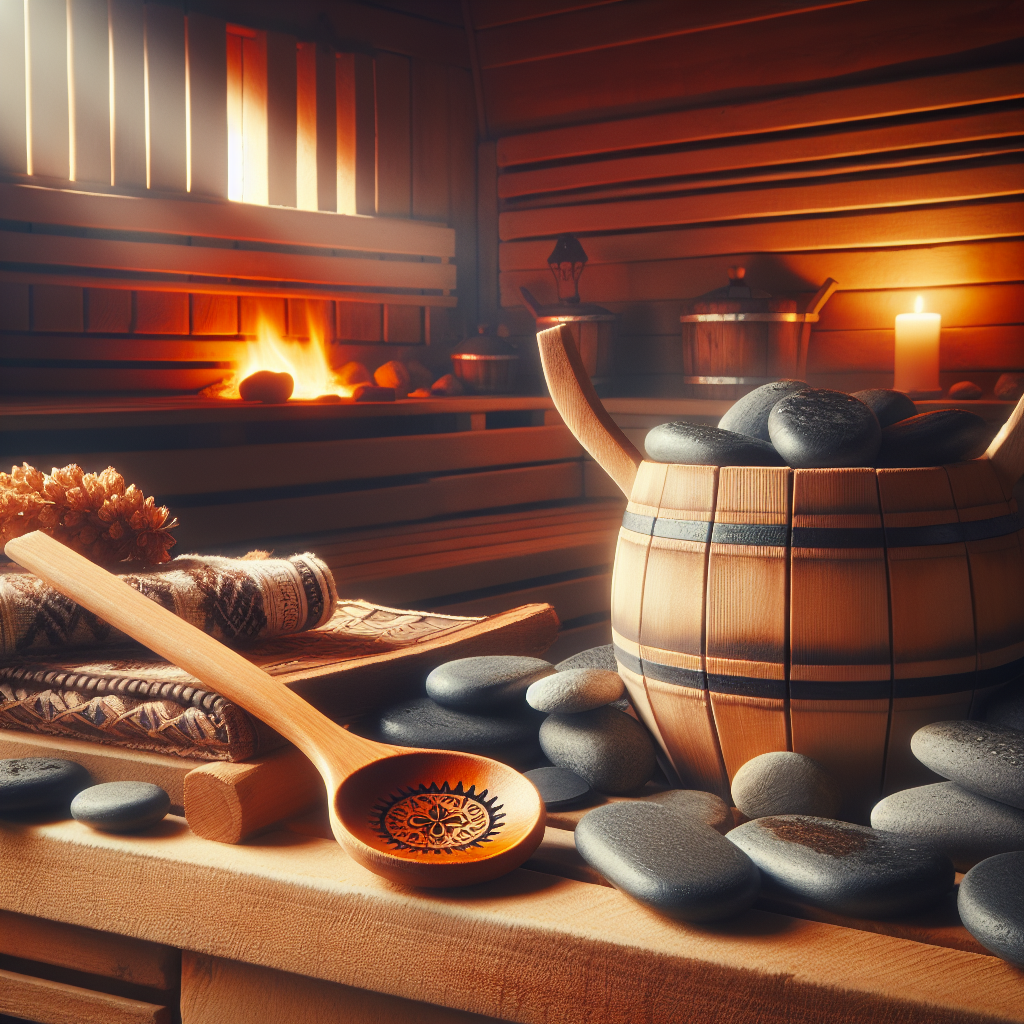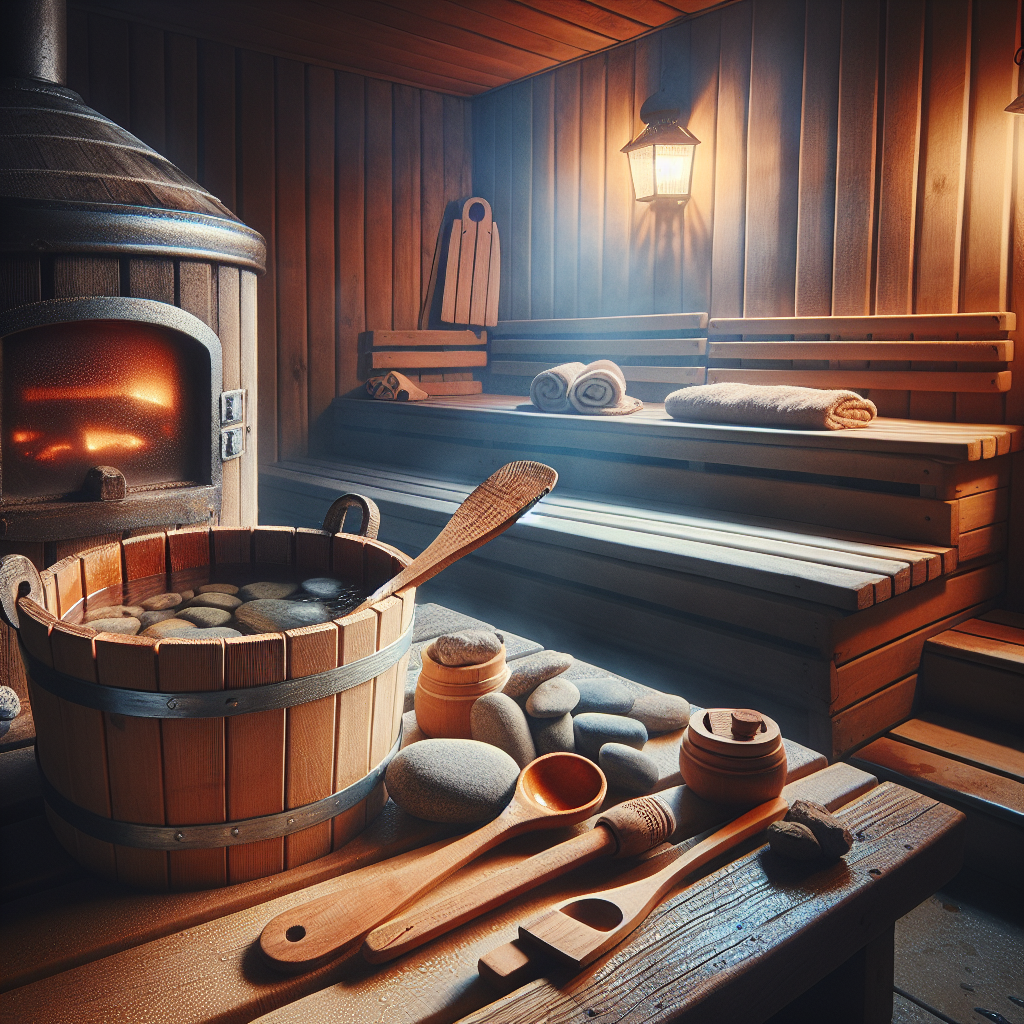Sauna, a centuries-old tradition, embodies a delightful blend of relaxation and rejuvenation. Stepping into the warm embrace of a sauna, you immerse yourself in a ritual deeply rooted in culture and community. From Finland to Japan, various countries have embraced distinct traditions that accompany sauna use.
Whether it’s the Finnish practice of “löyly” or the Japanese concept of “mizuburo,” these rituals add depth to the sauna experience and create a unique sense of camaraderie amongst sauna-goers.
Exploring these common traditions associated with sauna use not only enriches your own sauna sessions but also offers an opportunity to connect with diverse cultures around the world.
Sweating Rituals
Purifying the Body
In sauna culture, sweating is seen as a way to purify the body and release toxins. Sweating is believed to promote health and well-being, and many people incorporate sauna sessions into their regular self-care routines. The high temperature of the sauna helps to open up the pores and induce perspiration, allowing the body to eliminate impurities and cleanse the skin.
Loyly: Steam Rituals
Loyly, or steam rituals, are an important aspect of sauna bathing in many cultures. The steam is created by pouring water onto the hot sauna stones, which generates a burst of hot, humid air. This steam, also known as löyly, is considered therapeutic and refreshing. In some traditions, specific herbs or essential oils are added to the water to enhance the healing properties and create a pleasant aroma.
Whisking with Birch Branches
Another common sweating ritual in saunas is whisking with birch branches. This practice involves gently beating the body with softened branches of a birch tree. The leaves release aromatic oils when they come into contact with the warm skin, creating a soothing and invigorating sensation. Whisking with birch branches is believed to improve blood circulation, relax the muscles, and provide a rejuvenating experience.
Sauna Etiquette
Nudity Norms
When it comes to sauna etiquette, nudity norms vary depending on the cultural context. In many Scandinavian countries, such as Finland and Sweden, it is customary to use the sauna completely nude. This is seen as a way to promote equality and naturalness. However, in other regions or settings, such as public saunas or mixed-gender saunas, wearing swimwear or a towel is more common.
Respect for Others
Respecting the privacy and comfort of others is a fundamental aspect of sauna etiquette. It is important to maintain a quiet and peaceful atmosphere inside the sauna and avoid disruptive or loud behavior. Sauna-goers should also be mindful of personal hygiene, such as showering before entering the sauna and using a towel to sit or lie on to prevent sweat from directly contacting the benches.
Sauna Seating
In saunas, the arrangement of seating is usually based on personal preference and tradition. It is common to sit on the upper benches, where the temperature is higher, for a more intense sweat experience. However, if the sauna becomes too hot or overwhelming, moving to the lower benches or even exiting temporarily is perfectly acceptable. It is important to listen to your body’s needs and not push yourself beyond your comfort zone.

Sauna Bathing Techniques
Hot-Cold Contrast
One popular technique in sauna bathing is the hot-cold contrast, which involves alternating between the high heat of the sauna and the refreshing coolness of a cold plunge or shower. This contrast in temperature is believed to have various health benefits, such as stimulating blood circulation, boosting the immune system, and invigorating the body. It can also enhance the overall sauna experience, providing a sense of revitalization and rejuvenation.
Löyly Variation
Löyly variation refers to the different ways of creating steam in the sauna. Some sauna-goers prefer to pour larger amounts of water onto the sauna stones to create a more intense steam, while others prefer to pour smaller amounts for a milder experience. The choice of löyly variation depends on individual preferences, as well as the desired level of heat and humidity inside the sauna.
Aufguss: Infused Water Ritual
In some sauna traditions, an infusion ritual known as aufguss is performed. During aufguss, the sauna master or designated person pours water onto the hot sauna stones and uses a towel to distribute the resulting steam throughout the sauna. This practice is often accompanied by the addition of natural essences or essential oils to enhance the aromatic experience. Aufguss rituals are believed to intensify the purifying and relaxing effects of sauna bathing.
Sauna Customs by Region
Finnish Sauna Traditions
Finland is known for its deep-rooted sauna culture, where sauna bathing is considered a way of life. In Finnish saunas, it is common to go to the sauna with family, friends, or even with strangers in public saunas. Sauna sessions are often followed by a ritual of cooling off in a nearby lake or rolling in the snow, especially during the winter months. Sauna in Finland is seen as a social activity where people come together, share stories, and embrace the sauna spirit.
Russian Banya Customs
Russian banya is a variant of the sauna, deeply ingrained in Russian culture. Banya rituals often involve alternating between the hot sauna and a cold plunge pool or shower. In Russian banyas, it is customary to use venik, or birch branches, for whisking the body and improving blood circulation. Banya sessions are often followed by a meal and socializing, creating a festive and communal atmosphere.
Turkish Hammam Rituals
The Turkish hammam is a traditional bathing ritual that incorporates sauna-like elements. Hammams typically feature multiple steam rooms of varying temperatures, followed by a thorough scrubbing and massage by an attendant. The focus is on cleansing the body and rejuvenating the skin. In Turkish culture, hammam is a social experience where individuals come together, relax, and enjoy the healing properties of steam and water.

Sauna Socializing
Sauna Parties and Gatherings
Sauna parties and gatherings are popular in many cultures. Friends and family come together to enjoy the sauna experience, celebrate special occasions, or simply relax and socialize. Sauna parties often involve sharing food, drinks, and good conversation while enjoying the soothing heat and atmosphere. It is a time for bonding, connecting, and creating lasting memories.
Sharing Experiences in the Sauna
The sauna environment provides a unique opportunity for open and honest conversations. It is a space where people can let their guard down, unwind, and share their thoughts and experiences. Sauna-goers often engage in deep conversations, exchange stories, and connect on a more intimate level. The sauna becomes a sanctuary for both physical and emotional well-being.
Sauna Diplomacy
Sauna diplomacy refers to the practice of conducting important discussions or negotiations in the relaxed setting of a sauna. This informal approach is believed to foster trust, build relationships, and promote open communication. Sauna diplomacy has been used by politicians, business leaders, and diplomats as a way to create a conducive environment for constructive dialogue.
Sauna Relaxation Practices
Meditation and Mindfulness
The tranquility of the sauna makes it an ideal space for practicing meditation and mindfulness. The warmth and gentle sound of crackling wood provide a calming ambiance, helping to quiet the mind and promote a sense of inner peace. Sauna-goers often use this time to focus on their breath, practice visualization techniques, or simply allow their thoughts to flow freely.
Sauna Yoga and Stretches
Sauna yoga and stretches can be a wonderful way to enhance the relaxation and rejuvenation experienced in the sauna. The heat helps to loosen the muscles and increase flexibility, making it an optimal environment for gentle stretching. Simple yoga poses or stretching exercises can be practiced, promoting physical well-being and improving the mind-body connection.
Sauna Bathing Music
Listening to soothing music while in the sauna can enhance the overall relaxation and sensory experience. Soft and ambient tunes can create a serene atmosphere, allowing the mind to unwind and the body to fully embrace the therapeutic benefits of the sauna. The choice of music can vary depending on personal preferences, ranging from calm instrumental melodies to nature sounds.
Sauna Health Benefits
Sauna as a Cultural Health Practice
Sauna bathing is not only a cultural tradition but also a recognized health practice in many societies. The heat and sweating associated with saunas have been linked to various health benefits, such as improved cardiovascular health, increased circulation, and stress reduction. Sauna sessions are seen as a way to promote overall well-being and support the body’s natural healing processes.
Promoting Blood Circulation
The heat of the sauna causes blood vessels to dilate, promoting increased blood flow throughout the body. This improved circulation can have numerous positive effects, including better oxygen and nutrient delivery to the muscles and organs, enhanced wound healing, and a reduction in muscle soreness and tension. Regular sauna use can contribute to a healthier cardiovascular system and overall improved blood circulation.
Detoxification and Cleansing
Sweating in the sauna is believed to facilitate the release of toxins from the body through the skin. As the body perspires, toxins and impurities are expelled, supporting the natural detoxification processes. Additionally, the deep sweating experienced in the sauna can help unclog pores, remove dead skin cells, and improve the overall health and appearance of the skin.
Sauna Rituals for Special Occasions
Birth and New Beginnings
In some cultures, sauna rituals are performed to celebrate birth and new beginnings. The sauna is seen as a symbol of cleansing and renewal, making it a fitting setting for welcoming a new life into the world. Family and friends may gather in the sauna to honor the new parents, offer blessings, and share in the joyous occasion.
Sauna Weddings and Blessings
Sauna weddings and blessings are unique and memorable events. Couples may choose to exchange vows or receive blessings in the intimate and meaningful atmosphere of a sauna. These ceremonies often involve sauna rituals, such as pouring water on the stones for löyly, to symbolize a fresh start and the union of two lives.
Sauna Afterparties
Sauna afterparties are a popular way to unwind and continue the celebration after special events or gatherings. Following a wedding, birthday, or other significant occasions, guests can gather in the sauna to relax, reflect, and enjoy each other’s company. It provides a cozy and intimate setting for connecting with loved ones and extending the festivities.
Sauna Superstitions and Beliefs
Sauna Spirits and Mythical Creatures
In certain cultures, saunas are believed to be inhabited by spirits or mythical creatures. These entities are often seen as benevolent and protective, bringing luck, health, and fertility to those who respect the sauna traditions. It is believed that acknowledging and showing gratitude towards these spirits can enhance the spiritual connection with the sauna environment.
Rituals for Good Luck and Blessings
Some sauna-goers incorporate rituals for good luck and blessings into their sauna sessions. These rituals can include specific gestures, chants, or even tossing small objects, such as coins or herbs, onto the sauna stones. They are performed with the intention of invoking positive energies, warding off negative influences, and attracting good fortune.
Evil Expulsion and Sauna Protection
There are beliefs in certain cultures that saunas have the power to expel evil and provide protection against negative forces. Rituals involving burning herbs or performing specific gestures aim to cleanse the sauna space and create a protective barrier. These practices are often carried out during significant events or when the sauna is used for healing purposes.
Sauna Etymology and History
Origins of the Sauna
The origin of the sauna can be traced back to ancient times. The word “sauna” itself comes from the Finnish language and has been used for centuries to describe the steam bath practices in the region. Similar bathing practices have been found in various cultures worldwide, suggesting that the concept of sweating for health and purification has been recognized across different civilizations throughout history.
Cultural Evolution and Adaptation
Over time, saunas have evolved and adapted to different cultural contexts. Each region has developed its own unique sauna traditions, customs, and practices. From the Finnish sauna to the Russian banya and the Turkish hammam, the sauna has been embraced and integrated into diverse cultural identities and social rituals.
Sauna Worldwide
Today, saunas can be found across the globe, with variations in design, temperature, and cultural significance. They have become popular wellness retreats, relaxation spaces, and social venues. Sauna enthusiasts worldwide continue to explore and appreciate the timeless traditions, health benefits, and communal spirit associated with this ancient practice.
In conclusion, sauna traditions encompass a wide range of rituals, customs, and beliefs that have been passed down through generations. From sweating rituals and sauna etiquette to health benefits and special occasions, the sauna offers more than just physical relaxation. It creates a space for communal bonding, deep relaxation, and cultural preservation.
Whether you prefer the invigorating heat of a Finnish sauna, the social atmosphere of a Russian banya, or the cleansing rituals of a Turkish hammam, the sauna has a place in cultures and hearts around the world.
So, embrace the sauna experience, immerse yourself in its rich traditions, and let the warmth and steam envelop you in a world of tranquility and rejuvenation.

